Modern companies run on conversations:
- quick pings between teammates,
- project updates,
- customer questions,
- leadership announcements, and;
- support escalations.
The moment these conversations are scattered across emails, personal chat apps, and disconnected tools, things go downhill. This causes deadline slips, customers to wait longer, and employees to feel frustrated.
It’s where a need for modern Communication Platforms for Companies come in. They are a hub for messages, calls, meetings, and announcements. In this article, we’ll break down:
- why these platforms are worth the investment,
- how they support different teams
- What benefits can you expect over time?
What Exactly Are Communication Platforms for Companies?
Communication Platforms for Companies bring multiple communication channels into one dashboard that can provide:
- Team messaging
- Voice calls and call queues
- Video conferencing and screen sharing
- File sharing and searchable history
- Integrations with tools like CRM, help desks, and project management
The goal is to reduce “tool hopping” and create a single source of truth for daily conversations. In practice, that means:
- A sales rep can see customer details pop up when a call comes in.
- A support team can track conversations and link them to tickets.
- A leadership team can send company-wide updates in one place.
When these capabilities are centralized, communication becomes more structured, transparent, and consistent.
Key Benefits Across Teams and Departments
One of the biggest strengths of Communication Platforms for Companies is that they serve many stakeholders at once. Advantages for all teams vary:
- Leadership & management
- Can share announcements, track who has seen them, and gather feedback.
- Gain better visibility into how teams work and their issues.
- Front-end teams (sales, support, account managers)
- Use integrated calling and messaging to respond faster.
- One customer can be helped by more than one person due to info in the same channel.
- HR, finance, operations, marketing teams
- Projects can be coordinated in channels for campaigns or hiring.
- Share documents, policies, and updates in a central space.
- Frontline and field workers
- Stay connected through mobile apps.
- Receive latest alerts about schedule changes, safety issues, or urgent tasks.
The platform becomes a shared layer for the communication of all the departments. This reduces confusion and tools, while strengthening alignment across the whole organization.
Summary Table: Why Companies Use Communication Platforms
| Benefit Area | What the Platform Delivers | Result for the Business |
| Collaboration | Shared channels, chat, and video meetings | Faster decisions and fewer misunderstandings |
| Knowledge Sharing | Searchable messages and file history | Easier onboarding and less repeated work |
| Customer Experience | Integrated calling and support channels | Quicker responses and more consistent service |
| Flexibility | Mobile and remote-friendly features | Better support for hybrid and field teams |
| Management Insight | Activity data and communication patterns | Clearer view of team workload and engagement |
| Efficiency | Fewer disconnected tools | Lower costs and less time lost switching apps |
How They Support Hybrid and Remote Work
These work models depend on strong digital communication. When people are not in the same office, they can’t rely on conversations at the office or quick desk visits to stay aligned.
Communication Platforms for Companies reduce that gap by:
- Providing persistent channels where discussions remain visible over time.
- Making video meetings easy to join from any device, whether at home or in the office.
- Offering status signs for colleagues to know who is online, busy, or away.
These platforms help remote and hybrid teams feel more connected. The risk of remote employees missing out on important info is also reduced.
Comparing “Before vs After” Adopting a Platform
A simple way to understand the value of Communication Platforms for Companies is to compare life before and after adopting one.
| Scenario | Before: Disconnected Tools | After: Unified Communication Platform |
| Daily collaboration | Email, personal chats, and scattered files | Central channels with shared files and history |
| Meetings | Manual links, separate apps, no context | Start meetings from chats with built-in recording |
| Customer calls | Desk phones and separate call logs | VoIP calls linked to customer records and notes |
| Remote workers | Reliant on VPN and multiple apps | Single app on laptop or mobile with full features |
| Onboarding | New hires dig through old emails for context | New hires search channels and see past decisions |
| Management insight | Limited visibility into how teams communicate | Usage data, response times, and channel activity |
Measuring the ROI of Communication Platforms for Companies
Like any business tool, communication platforms should justify their cost. The good news is that many benefits can be measured, even if they seem “soft” at first.
Companies often look at data such as:
- Reduction in internal emails as more conversations move to channels.
- Faster response times to customer messages or support tickets.
- Shorter meeting times due to clearer agendas and better pre-meeting communication.
- Improved employee engagement scores, especially in questions about communication and collaboration.
Some organizations also track how quickly new hires ramp up when they have access to past discussions and centralized knowledge.
Conclusion: Communication Platforms for Companies
Many companies let their communication tools pile up over time. One team adds a chat app, another uses email and calls, and no one fully removes the old systems. As a result, messages, files, and decisions sit in many different places. People waste time trying to find what they need.
A company communication platform helps you step back and clean this up. It brings messaging, calling, and meetings into one place. Teams can see the full context of a project, share updates clearly, and add the right people to a conversation fast. Remote and office staff see the same information. Customers get quicker and more consistent replies.
You see the benefits in simple moments. A manager solves a problem in one channel instead of chasing five threads. A new employee finds an answer in seconds instead of interrupting a coworker. A support agent joins a call already seeing the full history. These small wins save time, lower stress, and improve how people work together. When you invest in a modern communication platform, you turn messy communication into a clear advantage.








